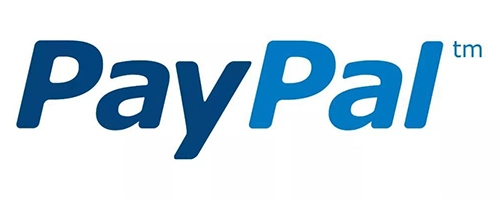- English
- Español
- Português
- русский
- Français
- 日本語
- Deutsch
- tiếng Việt
- Italiano
- Nederlands
- ภาษาไทย
- Polski
- 한국어
- Svenska
- magyar
- Malay
- বাংলা ভাষার
- Dansk
- Suomi
- हिन्दी
- Pilipino
- Türkçe
- Gaeilge
- العربية
- Indonesia
- Norsk
- تمل
- český
- ελληνικά
- український
- Javanese
- فارسی
- தமிழ்
- తెలుగు
- नेपाली
- Burmese
- български
- ລາວ
- Latine
- Қазақша
- Euskal
- Azərbaycan
- Slovenský jazyk
- Македонски
- Lietuvos
- Eesti Keel
- Română
- Slovenski
- मराठी
- Srpski језик
How can PCBA factories optimize the delivery process through inventory management?
2025-07-21
In the PCBA processing industry, on-time delivery is one of the core requirements of customers for factories, and inventory management plays a key role in optimizing the delivery process. Through efficient inventory management, PCBA factories can ensure the timely supply of raw materials, reduce downtime and improve production continuity and efficiency. This article will explore how PCBA factories can optimize the delivery process through scientific inventory management and provide practical strategies to improve delivery rates.

1. Accurate demand forecasting and inventory planning
The importance of demand forecasting
In PCBA processing, demand forecasting directly affects inventory planning. Based on order history data, market demand and customer production plans, factories can predict the demand for key materials in the future, formulate reasonable inventory plans, and avoid production stagnation due to material shortages.
Safety stock and minimum inventory setting
In order to cope with uncertainties in the supply chain, PCBA factories should set safety stock for core raw materials to prevent sudden demand fluctuations or supply chain disruptions from affecting production. At the same time, the factory can also set a minimum inventory. When the material inventory is close to the minimum limit, the system will automatically trigger the procurement process to ensure that production is not affected.
2. Application of real-time inventory management system
Introduction of ERP or MES system
Traditional manual inventory management is often inefficient and prone to omissions or misreporting. PCBA factories can achieve real-time monitoring of inventory by introducing digital management systems such as ERP (Enterprise Resource Planning) or MES (Manufacturing Execution System). These systems can automatically update inventory data, count material usage, and automatically replenish according to actual needs to ensure sufficient production materials.
Intelligent inventory warning and reminder
Real-time inventory management systems are usually equipped with inventory warning functions. Once the inventory of certain key raw materials is lower than the set value, the system will automatically remind the purchasing department. Through inventory warning, PCBA factories can arrange replenishment in advance, effectively reduce the risk of downtime waiting for materials, and further improve the reliability of production and delivery.
3. Implementation of JIT (Just-In-Time) mode
The impact of JIT on inventory management
The JIT (Just-In-Time) just-in-time production mode has been widely used in PCBA processing, reducing inventory backlogs, optimizing cash flow, and improving production efficiency. JIT requires factories to prepare materials and produce on demand according to actual production needs, so that the inventory is minimized, thereby reducing storage costs caused by excess inventory.
Efficient collaboration with suppliers
The successful implementation of the JIT model depends on close collaboration with suppliers. PCBA factories need to establish good communication channels with suppliers to ensure the timely supply of key materials. At the same time, by reaching an agreement with suppliers, factories can flexibly adjust the supply cycle and material batches, so as to respond in time when demand fluctuates and avoid inventory backlogs or shortages.
4. Regular inventory count and optimization
Inventory count to ensure data accuracy
Regular inventory counts are a key step to ensure the accuracy of inventory data. PCBA factories should regularly count inventory to verify whether the system records are consistent with the actual inventory. Accurate inventory data helps factories better manage materials, and promptly discover inventory differences, adjust procurement and production plans, and ensure a smooth delivery process.
Inventory optimization and expired material processing
In PCBA processing, some materials have the characteristics of shelf life or technology updates, and are prone to expire or fall behind due to long storage. Factories need to regularly check the effectiveness of materials, clean up expired or unsalable materials, and reduce inventory backlogs. At the same time, through material classification management, common and key materials in the inventory can be kept sufficient, while materials with low demand can be kept at low inventory to optimize the inventory structure.
5. Establish flexible emergency inventory
The importance of emergency inventory
Although the JIT model can reduce inventory costs, factories still need to have emergency inventory when facing sudden orders or unstable supply chains. Emergency inventory can help factories maintain normal production and prevent delivery delays when production demand suddenly increases or supply chains are interrupted.
Reasonable allocation of emergency materials
PCBA factories can set key components, PCB boards, soldering materials, etc. as emergency materials according to the importance of different materials and the degree of supply chain risk, and allocate a certain amount of spare inventory for them. The establishment of emergency inventory needs to be reasonably configured according to the production scale and demand frequency of the enterprise to ensure that it can respond quickly to demand and ensure delivery time in special circumstances.
Summary
Inventory management is an important part of optimizing the delivery process for PCBA processing factories. Through accurate demand forecasting, real-time inventory management system, JIT mode implementation, regular inventory check and emergency inventory establishment, PCBA factories can achieve efficient management of materials, ensure production continuity and on-time delivery of orders. Effective inventory management not only reduces the factory's operating costs, but also improves customer satisfaction, winning more opportunities for the factory in the fierce market competition.
-
Delivery Service






-
Payment Options









